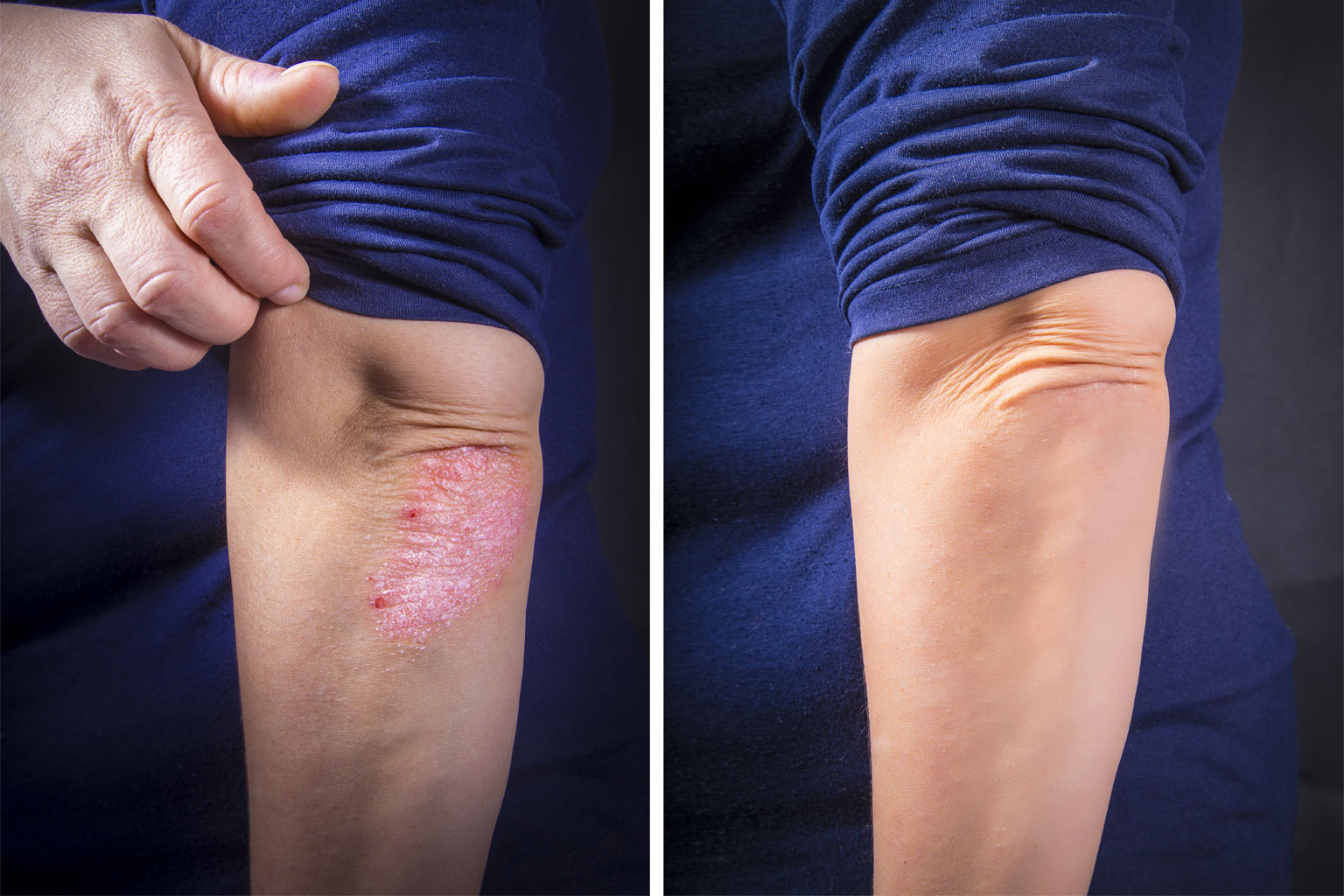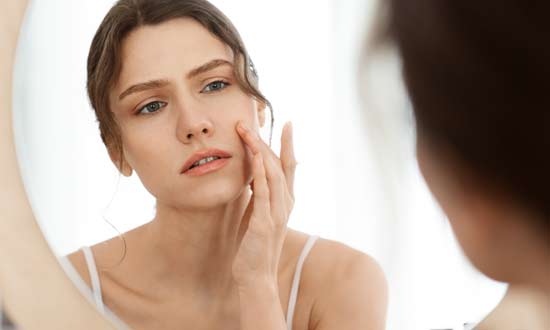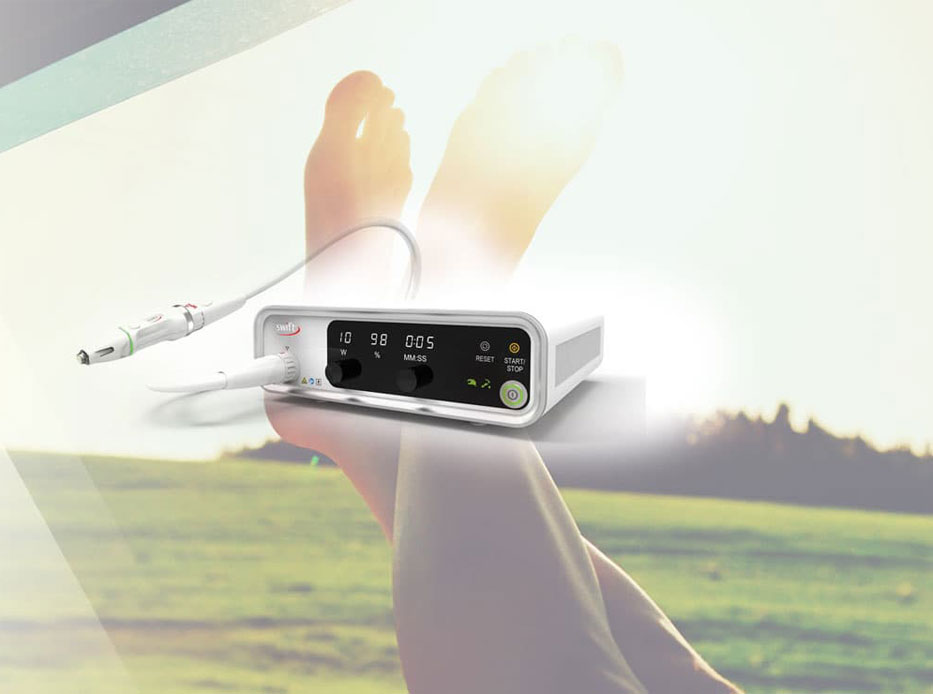Medical Services
Dr. David Sax is a leading expert in Mohs surgery for skin cancer, and uses innovative techniques for early melanoma screening. He also uses the latest and most effective treatments available for medical skin conditions such as acne, psoriasis, vitiligo, actinic keratosis and more. Dr. Sax’s goal is to provide expert care and to educate you so you can play a proactive role in your treatment. Over the years, his highly individualized approach has helped thousands of patients achieve excellent results.
Skin Cancer – MOHS
Each year over 3.5 million skin cancers are diagnosed in over 2 million people,* including many residents of Florida’s Sarasota, Manatee and Bradenton counties. Fortunately, cure rates are high when skin cancers are identified and treated early. As a board certified Sarasota dermatologist with an additional year of Mohs fellowship training, Dr. David Sax is a true expert in this specialized field.
View More
What should I expect?
A skin exam is done to check the skin for any signs of skin cancer, and while you can do it by yourself, it is best to have a dermatologist carry it out regularly.
You should expect to be fully unclothed or have only a hospital gown on. The doctor will then examine you from head to toe, which will include relatively obscure spots such as behind your ears, around your buttocks and genitals, and between your fingers.
A skin exam can be embarrassing to undergo but understand that you are being examined by a professional who carries out many of these examinations every week and the exam is worth potentially detecting early skin cancer. When detected early, skin cancer can be treated with a much higher success rate.
How long should it take?
A skin exam tends to take less than 20 minutes in most cases and can frequently be as little as 10 minutes in some instances.
How do I know if I need a skin exam?
If you have factors that increase your risk of skin cancer, it is important to go for a professional skin exam regularly. These factors include:
- Family history of skin cancer
- Skin cancer in the past
- Reduced immunity
- Frequent exposure to UV rays
- Lighter skin color
There are several other risk factors, which can be found here.
What should I look for on my skin?
If you’re doing a self-exam or want to know skin signs that should be shown to your doctor as soon as possible, they include the following, amongst others:
- A sore that has not healed for more than two weeks
- A changing mole or spot
- A painful mole or spot
- An irregularly shaped mole or sore
- A mole that bleeds easily
What are good resources online?
Good resources online regarding the skin and skin cancer include the following:
Skin Cancer – Skin eBx
Every year over 3.5 million skin cancers are diagnosed in over 2 million people, including many residents in Sarasota and Manatee counties.
Psoriasis
The Psoriasis is ideal for treating mild to moderate psoriasis and vitiligo as well as some forms of eczema. Traditionally hard-to-treat areas such as knees, elbows, and scalp are easily treated, thanks to the laser’s aiming beam and adjustable spot size hand piece. The targeted high-dose therapy can effectively treat stubborn plaques, even those that have not responded to other treatments.
View More
What is psoriasis?
Psoriasis is a chronic skin condition that manifests as scaly patches on the skin that are usually red and itchy.
There are several types of psoriasis, with each one manifesting differently and usually on a different part of the body.
This condition is chronic and will appear for weeks or months at a time before resolving for a while. Certain things can trigger its reoccurrence.
What causes this skin condition?
The exact mechanism that causes psoriasis is not well understood. However, it is known that the condition causes inflammation in the skin, which results in plaques growing over the site of inflammation due to the overgrowth of skin cells. The cells do not shed as normal skin cells do, resulting in thickened scaly skin in some locations.
What are the symptoms of psoriasis?
Psoriasis can manifest with multiple symptoms, which include the following:
- Reddened, scaly patches of skin
- Dry skin that cracks and bleeds easily
- Itching
- Burning
- Thickening and pitting of nails
- Stiff joints
Psoriasis is commonly seen on the scalp, face, elbows, knees, genital region, nails, hands, and feet.
What can trigger psoriasis?
A flare-up of psoriasis can be caused by many different factors. However, triggers are not definite, and what might trigger one person’s psoriasis may be completely harmless to another. They include the following:
- Stress
- Cold weather
- Trauma to the skin
- Illness
- Certain medications (e.g. beta-blockers, antimalarials, aspirin, lithium)
- Smoking
- Alcohol consumption
How is psoriasis treated?
Psoriasis has no cure, but the symptoms that it causes can be managed with medication and other forms of therapy.
To prevent the overgrowth of skin cells, doctors can opt to use creams, light or laser therapy, or medication that is taken by mouth or injected.
The type of treatment used is all dependent on the specific case being treated. The condition may resolve in the present, but it will usually flare up again in the future. However, new treatments being developed make it easier to keep the condition under control for longer.
However, the patient can take some simple steps to treat the condition, which include exposure to the sun, frequent use of moisturizers, and relaxing to reduce stress.
What are some good resources on psoriasis?
The National Psoriasis Foundation has a lot of information on this condition for those who may be struggling with the condition.
Scar Treatment
Treatments include surgery to remove the scar, steroid injections, or silicone sheets to flatten the scar. Smaller keloids can be treated using cryotherapy (freezing therapy using liquid nitrogen). You can also prevent keloid formation by using pressure treatment or gel pads with silicone when you are injured. Keloid scars are most common among people with dark skin.
Acne
Using a specialized blue light that kills acne bacteria in your dermis, BLU-U is a safe, non-painful way to help control your acne. How does it work? It’s simple – you sit with your face close to the blue light for a short session (typically about 17 minutes) once or twice per week, for up to five weeks.
View More
What causes acne?
Acne is a condition that occurs when the hair follicles on the face – and sometimes the back, chest, and shoulders – become clogged with oil and skin cells. This causes inflammation and eventually acne spots.
This typically occurs in adolescents going through puberty. The reason for this is the hormonal changes that occur for people in this age range. Hormonal changes can also affect older people, which is why women can be prone to acne during their periods or pregnancy.
A family history of acne is also likely to increase the risk.
What are the different kinds of acne spots?
There are six different kinds of acne spots, which all take on distinct appearances.
- Blackheads: black bumps on the skin that are closed clogged pores.
- Whiteheads: firmer bumps on the skin that are open clogged pores.
- Papules: small bumps that may sometimes be tender.
- Pustules: small bumps that are filled with pus. White tip gives them away.
- Nodules: Hard lumps under the skin that are painful.
- Cysts: Similar to pustules, but several times larger.
How can I take care of my acne at home?
- Do not pop or squeeze any acne spots.
- Wash face with a cleanser no more than two times a day.
- Use an emollient for dry skin, as it can make acne worse.
- Wash the affected area of the skin two times or less each day.
How can acne be treated?
Acne is not a life-threatening condition, but it can have severe effects on self-esteem. Because of this, it is important to treat the condition if it appears not to be resolving in adult years.
Acne is frequently treated with ointments containing benzoyl peroxide. There is a lot of proof demonstrating the efficacy of this substance in the resolution of acne.
In some cases, antibiotics may need to be introduced to take care of infected acne spots. Blue light therapy can also be used for the same purpose.
Laser therapy can be used to treat the scars that bad acne can sometimes leave in its wake.
Where can I learn more about acne?
American Academy of Dermatology Association Acne Resource Center
Actinic Keratosis
AKs – often called “sun spots”— are rough-textured, dry, scaly patches on the skin caused by excessive exposure to ultraviolet light (UV) such as sunlight. They occur most often on sun exposed areas such as the face, scalp or ears, and can range in color from skin toned to reddish brown.
View More
What is an actinic keratosis?
This is a scaly patch of skin that arises due to consistent exposure to the sun. They typically show up on the areas of the body exposed to the sun, such as the face, neck, back, hands, scalp, and forearms.
Actinic keratosis is also referred to as solar keratosis, and it is a precancerous condition, which means that it can develop into cancer in some cases.
What is the major complication of actinic keratosis?
This condition is pre-cancerous, and the major worry when it occurs is the possibility of it developing into cancer, particularly squamous cell carcinoma.
The chance of this progressing to skin cancer can be as high as 10%.
How does an actinic keratosis look?
Actinic keratosis is a slow-growing patch that is scaly and rough. They tend to be less than an inch across. It is usually found on the areas of the body that are exposed to the sun the most.
They may appear in many different colors, which include brown, pink, and red. They may also experience other symptoms such as itching or burning.
Actinic keratosis may be a raised patch or bump, and in some instances, appear like a wart.
What are the risk factors?
The risk factors for this include:
- Frequent sun exposure or sunburn
- Exposure to UV light through tanning beds or other sources
- Age above 40
- Immunocompromised
- Fair skin
How can an actinic keratosis be prevented?
This condition can easily be prevented with the proper safety tips, mostly to reduce exposure to UV light.
- Using sunscreen of at least SPF 30 on all exposed skin before going outside
- Spending less time outdoors
- Wearing clothing that covers as much skin as possible, as well as appropriate hats
How is actinic keratosis treated?
While in some cases, the growth may resolve spontaneously, it is best to treat these growths as it is hard to determine which ones will eventually become skin cancer.
Actinic keratosis can be treated with special creams applied over the growth, photodynamic therapy, or surgical techniques can be used to remove it, including cryotherapy, laser therapy, and curettage.
Warts
Warts are small, rough, hard growths that typically appear on the hands or the feet, though they can be on other parts of the body. They tend to have no symptoms, though they can be painful when they are on the feet.
View More
What do warts look like?
Warts can be flesh-colored, pink, or tan, and tend to be rough to the touch. Some warts may have black specks on them.
What can cause warts?
Warts are caused by a virus known as HPV (human papillomavirus). Warts are also known as papillomas.
There are several different strains of HPV and they can each cause different variants of warts, such as warts that appear around the anus and genitals, or warts that grow on the bottom of the foot.
HPV can be spread from person to person by sharing personal objects and skin contact, though some variants are transferred through sexual activity.
Are warts dangerous?
Most warts are harmless and will eventually resolve even without being treated, but some warts, particularly genital warts caused by high-risk variants of HPV, can lead to cancer.
It is for this reason that it is best to contact your dermatologist to ensure that you do not have a high-risk wart and to have the growth removed if necessary.
How can warts be treated?
There are several ways that warts can be treated depending on the location. They may take multiple sessions of treatment before they are entirely gone.
- Salicyclic acid to peel the wart
- Surgical removal
- Cryotherapy
- Laser treatment to destroy the blood supply to the wart
- Microwave therapy
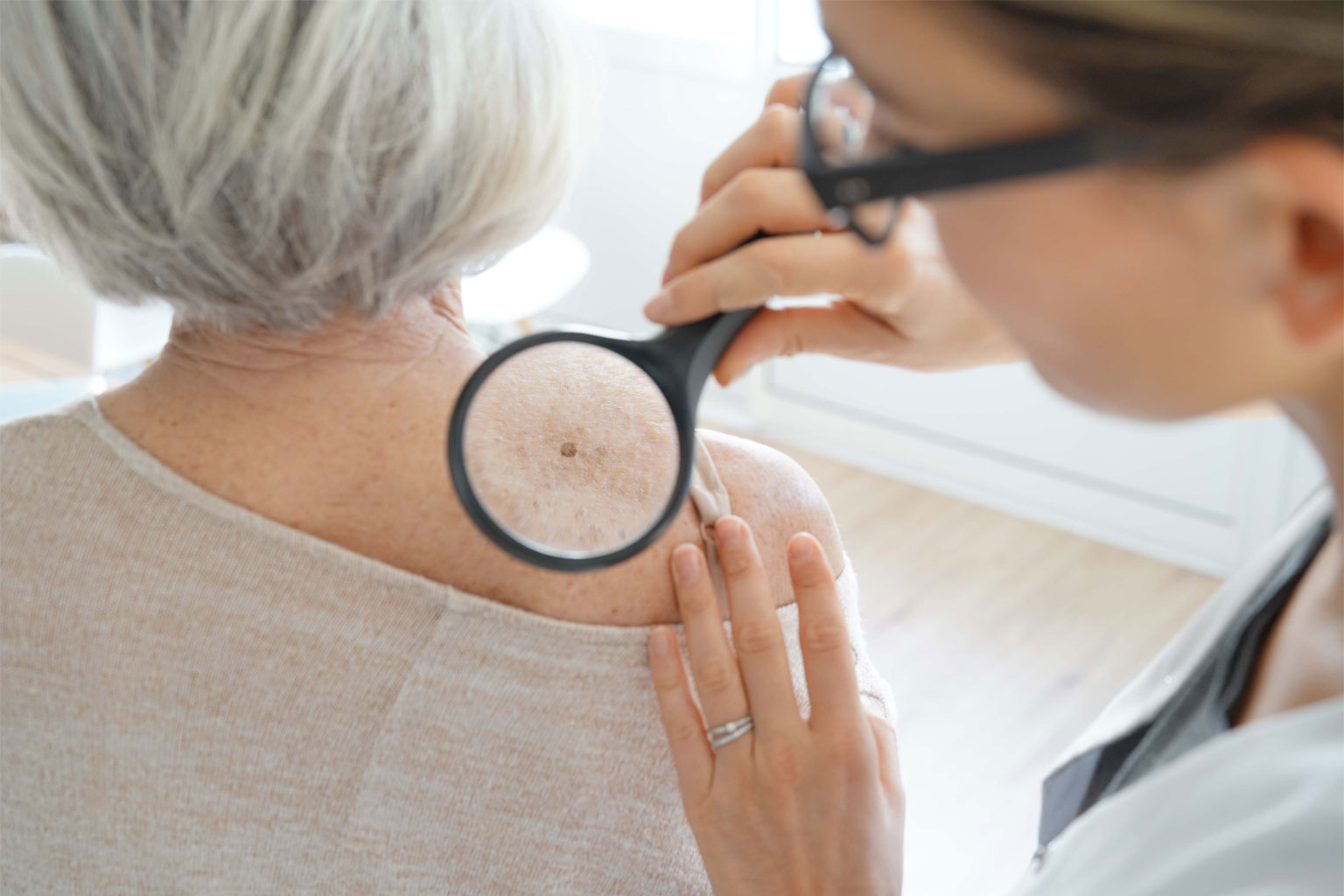
Skin Exams
A skin exam is done to check the skin for any signs of skin cancer, and while you can do it by yourself, it is best to have a dermatologist carry it out regularly.
You should expect to be fully unclothed or have only a hospital gown on. The doctor will then examine you from head to toe, which will include relatively obscure spots such as behind your ears, around your buttocks and genitals, and between your fingers.
View More
What should I expect?
A skin exam can be embarrassing to undergo but understand that you are being examined by a professional who carries out many of these examinations every week and the exam is worth potentially detecting early skin cancer. When detected early, skin cancer can be treated with a much higher success rate.
How long should it take?
A skin exam tends to take less than 20 minutes in most cases and can frequently be as little as 10 minutes in some instances.
How do I know if I need a skin exam?
If you have factors that increase your risk of skin cancer, it is important to go for a professional skin exam regularly. These factors include:
- Family history of skin cancer
- Skin cancer in the past
- Reduced immunity
- Frequent exposure to UV rays
- Lighter skin color
There are several other risk factors, which can be found here.
What should I look for on my skin?
If you’re doing a self-exam or want to know skin signs that should be shown to your doctor as soon as possible, they include the following, amongst others:
- A sore that has not healed for more than two weeks
- A changing mole or spot
- A painful mole or spot
- An irregularly shaped mole or sore
- A mole that bleeds easily
What are good resources online?
Good resources online regarding the skin and skin cancer include the following:
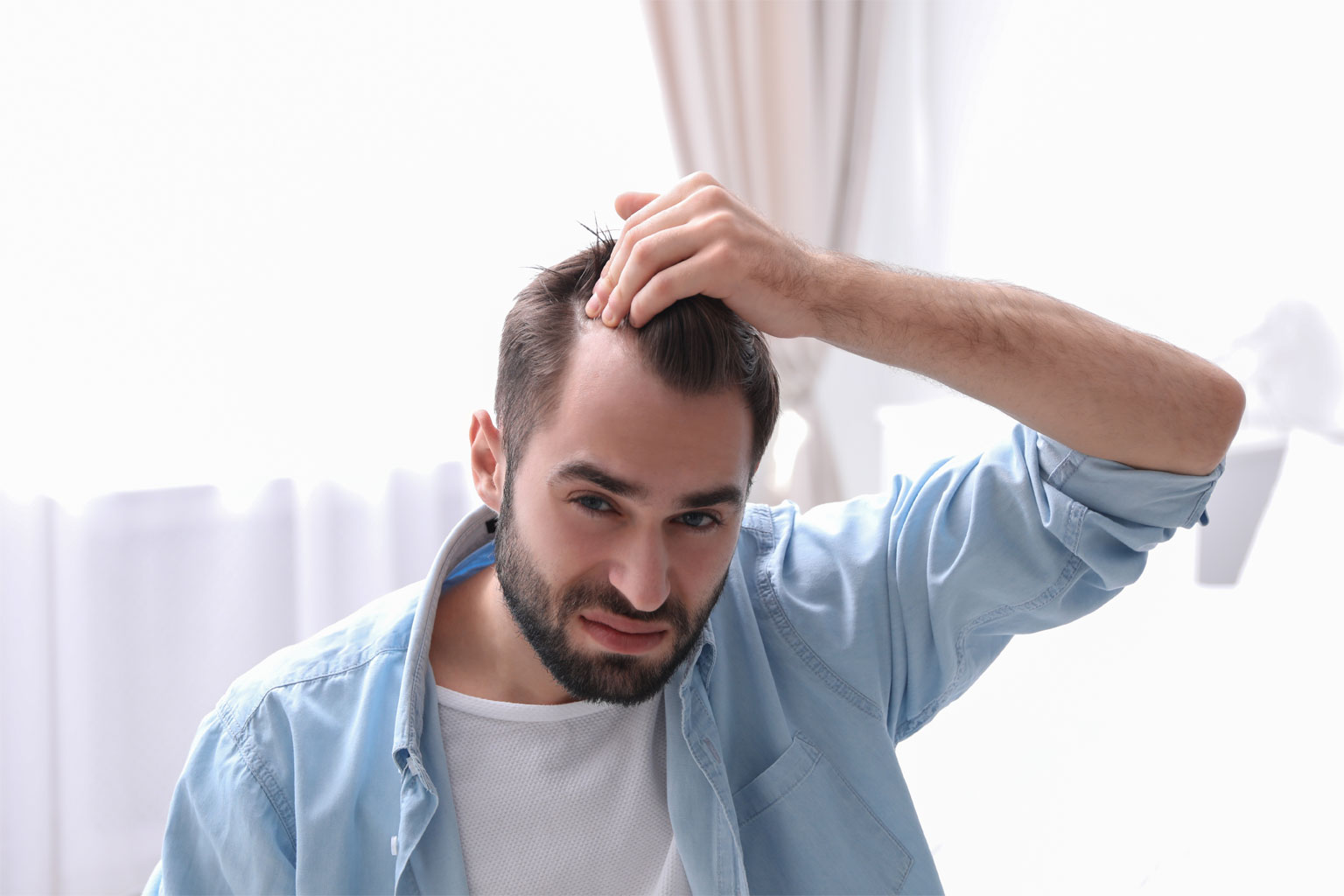
Hair Loss
If you are experiencing hair loss, also known as alopecia, there are quite a few common causes. The most common is simply being predisposed to it, such as in male-pattern baldness which shows up as a man gets older.
Certain medical conditions can cause hair loss. Some of these include fungal conditions like ringworm or autoimmune diseases.
View More
What are the common causes?
Treatments like chemotherapy and radiotherapy (directed at the head) can result in alopecia. Other causes include hairstyles that cause a lot of pull on the hair, hormonal changes, or immense stress.
What are the types of hair loss?
Although hair loss can be classified into many different types, one of the most relevant is to divide it into both scarring and non-scarring hair loss.
Scarring hair loss is called that because the condition behind it causes the hair follicle to be destroyed and scar tissue left in its place. Without any intervention, this will cause permanent hair loss in the affected areas.
Non-scarring hair loss tends to be easier to treat and when the cause is treated, hair will typically grow back normally.
Can it be treated?
Hair loss can be remedied in most cases, particularly for people with non-scarring hair loss. Regularly undergoing certain types of scalp treatment can ensure that the follicles remain healthy and hair regrowth is promoted.
In scarring hair loss, nothing can be done to restore the follicles that have been destroyed, but the destruction of other follicles can be stopped if caught on time. A hair transplant is the only viable option for those who have been afflicted by severe scarring hair loss.
What are some good resources online?
To read more on hair loss, you can check these great online resources out:
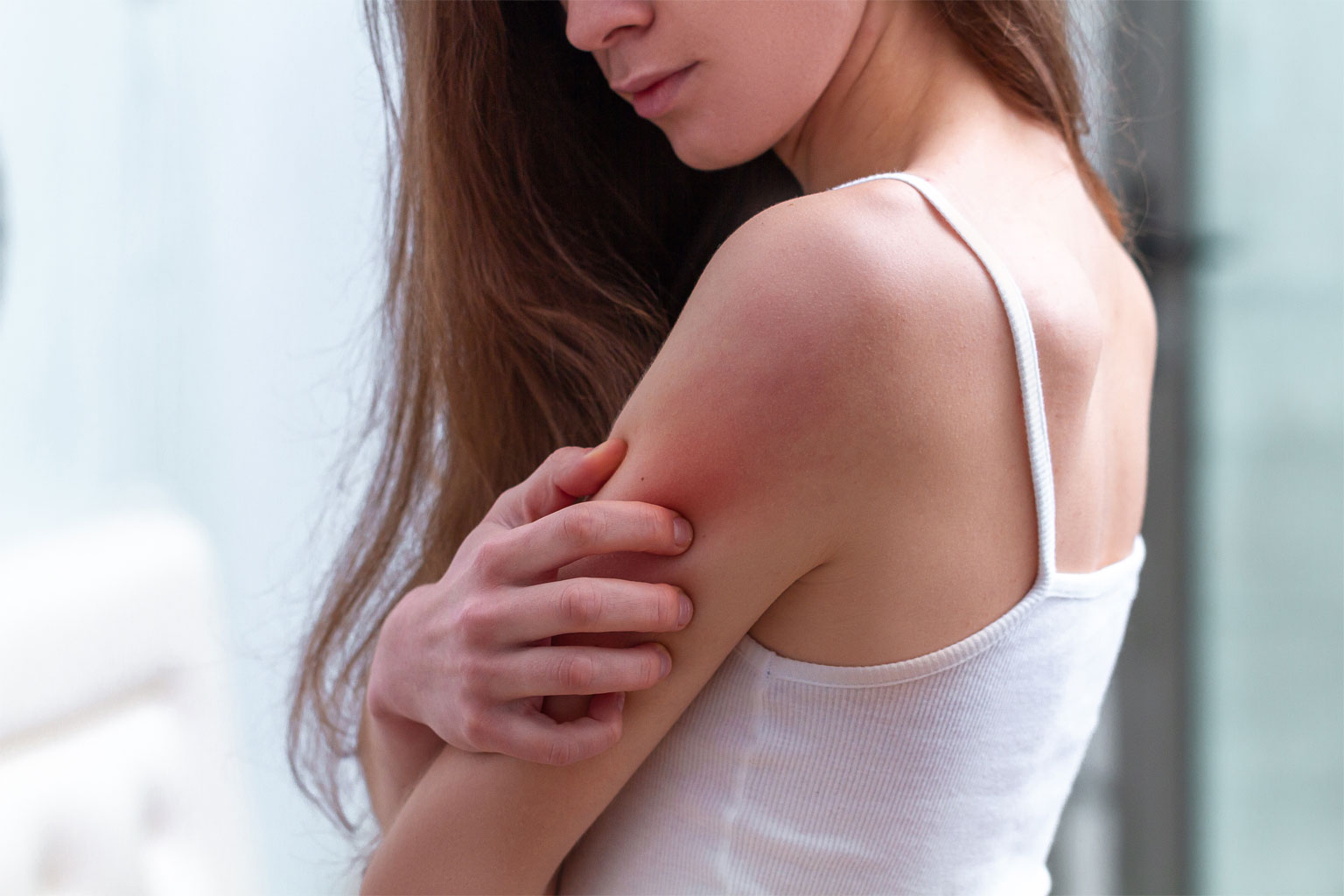
Rashes
Rashes can be caused by many things. It is up to an experienced dermatologist to look at the pattern of the rash – such as its location, size, and other symptoms –to determine the cause.
View More
What can cause rashes?
Some causes of rashes include allergies, which can be from either direct contact or oral intake; side effects of medication, heat, fungal infections like candidiasis, and medical conditions such as autoimmune disorders like lupus.
Do all rashes go on their own?
Whether a rash will resolve spontaneously or not is dependent on the cause. For allergic reactions or rashes caused by medication, they will resolve once the offensive substance is removed.
For rashes caused by infections, the immune system may eventually take care of it, but it is preferable to contact a doctor and have the rash assessed and treated appropriately.
In some cases, rashes might be a sign of a more serious condition like an autoimmune condition. In these cases, the rash can stay for months or even years until some kind of treatment is had.
How are rashes treated?
The treatment regimen for a rash is dependent on its cause. To put it simply, removing the cause, whether it is a microorganism, a medication, or heat, is all that is needed to resolve it in most cases.
Rashes caused by infection can be treated with appropriate antibiotics. Allergic reactions can be treated by using anti-histamine medications alongside removing the allergen.
Autoimmune rashes require more complex treatment based on the specific condition in question, which underlines the importance of visiting your dermatologist.

Eczema
If you notice patches of dry, itchy, and inflamed skin, which may feel scaly, it may be likely that you have eczema.
However, eczema can sometimes be severe, and in these cases, in addition to the above symptoms, the skin may be crusting or weeping.
View More
What is eczema?
Eczema is a group of skin conditions, though the term tends to refer to atopic dermatitis, one of these conditions. Eczema makes the skin inflamed, dry, and itchy.
How do I know if I have eczema?
You may also be more likely to have eczema if you have a personal or family history of conditions such as asthma, allergies, or eczema.
What causes eczema?
Eczema is not caused by a single factor alone, but rather, a combination of them. This can include whether you are genetically predisposed to it, triggers in the environment such as heat, irritant cosmetics, or sweating; your immune system, and even stress.
How is eczema treated?
The genetic aspect of eczema may be difficult to have control over, but environmental triggers and stress can easily be controlled or removed. While you are in the best position to figure out what might be triggering your eczema, working together with your dermatologist can make it easier to figure out.
Where can I learn more about eczema?
The Eczema Resource Center page from the American Academy of Dermatology Association is a great place to start to learn more about this condition. You can ask your dermatologist any questions that may be on your mind as well.

Rosacea
Rosacea is a skin condition that causes flushing of the face, and sometimes small bumps filled with pus. Patients with rosacea have periods without the symptoms, and then the condition may be triggered and remain for weeks or months. Rosacea can be tricky to diagnose as it may resemble acne and other skin conditions.
View More
What is rosacea?
Other symptoms of rosacea include a burning sensation, visible veins in the skin of the nose and cheeks, and sometimes eye problems (ocular rosacea).
The National Rosacea Society has a lot of good resources on this skin condition, including images of rosacea on different patients.
Who is most likely to have rosacea?
Rosacea is a condition that can affect any group of people, though it is predominantly seen in Caucasian, middle-aged women.
Individuals who smoke or have a family history of the condition are also predisposed.
What can trigger rosacea?
While the cause of rosacea is unknown, a lot more is known about the factors that can trigger the condition to flare up. These include:
- Extremes of temperature
- Certain cosmetics
- Exercise
- Spicy foods
- Alcoholic beverages
- Emotions
- Some medications, particularly vasodilators
How is rosacea treated?
There is no definitive treatment for rosacea, though it can be controlled and the symptoms managed. Developing a treatment regimen may take time in many cases, so it is important to set an appointment with your dermatologist.
Oral antibiotics can be used to treat the pus-filled bumps that appear in some cases.
Certain ointments can be applied to the skin to reduce the intensity of the flushing that patients experience, as well as some ointments to combat pimples.
There is also laser therapy and photofacial therapy to reduce visible veins.

Seborrheic Keratosis
Seborrheic keratosis is a wartlike skin growth that usually shows up on the chest, back, neck, or head of some people. It is a benign growth, which means it is non-cancerous and harmless.
View More
What is seborrheic keratosis?
Seborrheic keratosis is relatively common in older people and is not something to be too worried about.
How can I identify seborrheic keratosis on the skin?
You can tell when a growth on the skin is seborrheic keratosis if you know the symptoms and the possible ways that it appears.
It tends to be a round or oval growth on the upper body that is waxy or like a wart. It is usually tan or brown, though it can also be black.
The surface of this growth will be scaly and may be flat or raised, and the entire growth tends to look as if it was pasted onto the skin. The growth can sometimes be itchy too.
Here are some images of the lesion.
What are the risk factors for seborrheic keratosis?
The major risk factors are being older than 50 years of age and having a family history of this skin condition. Increased exposure to the sun can also predispose.
How is this condition treated?
This is a condition that does not need to be treated as the growths do not pose any harm. However, many people opt to treat and remove the growths for cosmetic reasons or because they are getting irritated.
Removal can be done through any of the following means:
- Removing the growth surgically
- Freezing the growth off with liquid nitrogen
- Burning the growth with electricity
- Using a laser on the growth
- Applying hydrogen peroxide to it

Cysts
Cysts can form in many organs in the body, including the skin. A cyst is a sac that contains a semi-solid material, fluid, or pus. Cysts on the skin are benign and will not become cancerous.
View More
What are cysts?
The two most common types of cysts that grow on the skin are epidermoid cysts and sebaceous cysts.
An epidermoid cyst happens when skin cells from the surface end up in the deeper layers of the skin and continue to grow and divide. They form the wall of the cyst and secrete the substance that fills the sac.
A sebaceous cyst happens when the sebaceous glands, which produce the natural skin oil known as sebum, become clogged, fill up, and form a sac.
What do cysts on the skin look like?
Skin cysts tend to appear as smooth lumps that are the color of skin or whitish-yellow. They are frequently found on the neck, upper back, and scalp, though any other part of the skin can have cysts.
Sometimes they can be reddened when they are inflamed. They tend to be relatively small, like peas, but in some cases, they can be very large, like golf balls.
What symptoms do cysts cause?
Cysts tend to be painless when they occur. However, if they rupture into the skin or become inflamed, they can become painful. With this comes redness and swelling.
How can a cyst be treated?
Many cysts may not need to be treated and might resolve on their own. Those that don’t resolve are usually unproblematic.
In some cases, however, particularly when they become inflamed, the cysts will need to be drained to relieve the pressure. After draining, the cyst will recur if the sac under the skin is not removed. This can be done by a dermatologist.





